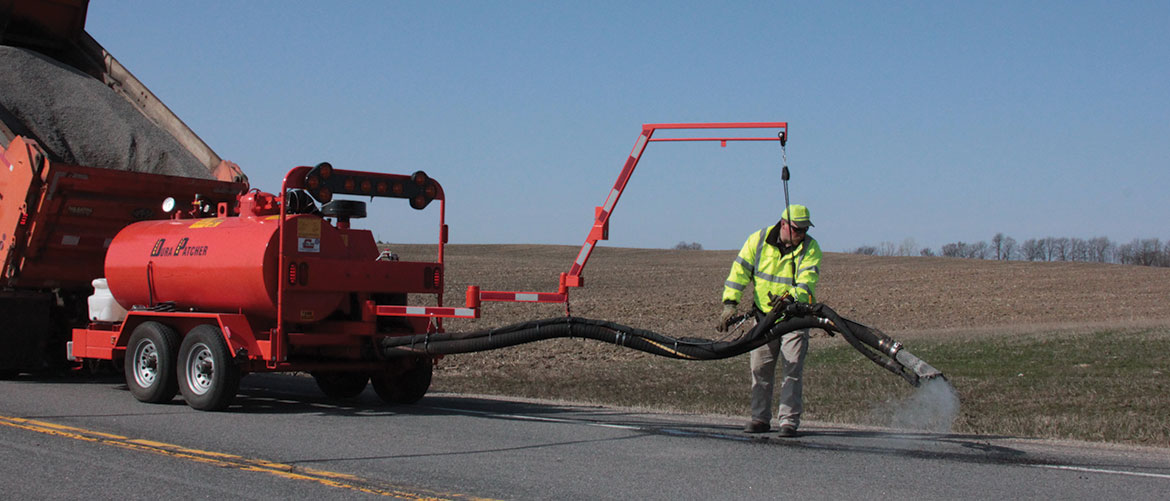
Repairing potholes in roads is simple to do with the right equipment. But before you can seal these imperfections, it’s important to know how these openings form and what you can do to ensure a long-term fix.
Why Are Potholes a Problem?
Potholes are an indication of poor road maintenance. Small cracks in pavement lead to a much larger problem as environmental elements, heavy vehicles, and changing temperatures promote expansion and contraction.
Problems caused by potholes include vehicle collisions, expensive automotive repairs, flat tires, and chipping asphalt. These forms of distress in pavement start out small but can develop into massive craters for water, road salts, and debris to accumulate.
Benefits of Pothole Repairs
Repairing potholes in major road systems ensures drivers can navigate from point A to point B safely. It is often less expensive for property owners and townships to correct potholes sooner than later. Below are some of the main advantages of repairing potholes in roads:
- Repairs enhance the appearance of populated areas.
- Prevents potholes from growing wider and deeper (leading to a complete demolition).
- Drivers can stay in control of their vehicles and prevent suspension damage.
- Pothole repairs improve the flow of traffic (fewer standstills).
- Pedestrians can walk about during evening hours with fewer tripping hazards.
How to Properly Fix a Pothole
There are numerous methods for correcting potholes. However, temporary sealants only last for so long. The best way to ensure your efforts survive seasonal changes, sun exposure, and harsh conditions is to cut and patch sections accordingly.
Full-depth patching involves cutting out distressed asphalt and replacing sections with an updated mix. In some cases, this requires professionals to cut several inches into a surface for permanent results. Review the following steps to remove potholes and level off working surfaces:
- Remove any loose asphalt from the pothole.
- Rinse the opening to eliminate dirt, rocks, and debris (allow the pothole to dry completely).
- Use chalk to outline cutting sections (check that your outline extends into structurally sound asphalt).
- Acquire a pavement saw to cut along your outline. The outline should be at least one foot from the pothole in all directions.
- Remove broken sections of asphalt and assess whether further drainage is necessary.
- Level subgrade layers with a vibratory plate compactor or roller.
- Use a hot-mix or cold-mix asphalt solution to fill the opening. Large-scale projects should have mixtures split into four-inch layers.
- Spread the asphalt mixture layer by layer, and use compaction equipment until the patch matches the surface of the road.
- Check that the patch surface is level using a straight edge (repeat compaction stage until level).
- Repeat the process if the assignment calls for multiple patches.
Choose Southern Vac for Pothole Patching Equipment
Southern Vac provides world-class pothole patching equipment for contractors in North Carolina, South Carolina, and Tennessee. We carry the largest stock inventory and rental fleet in the Southeast. Browse our current offerings online, and complete our contact form for prompt assistance.
